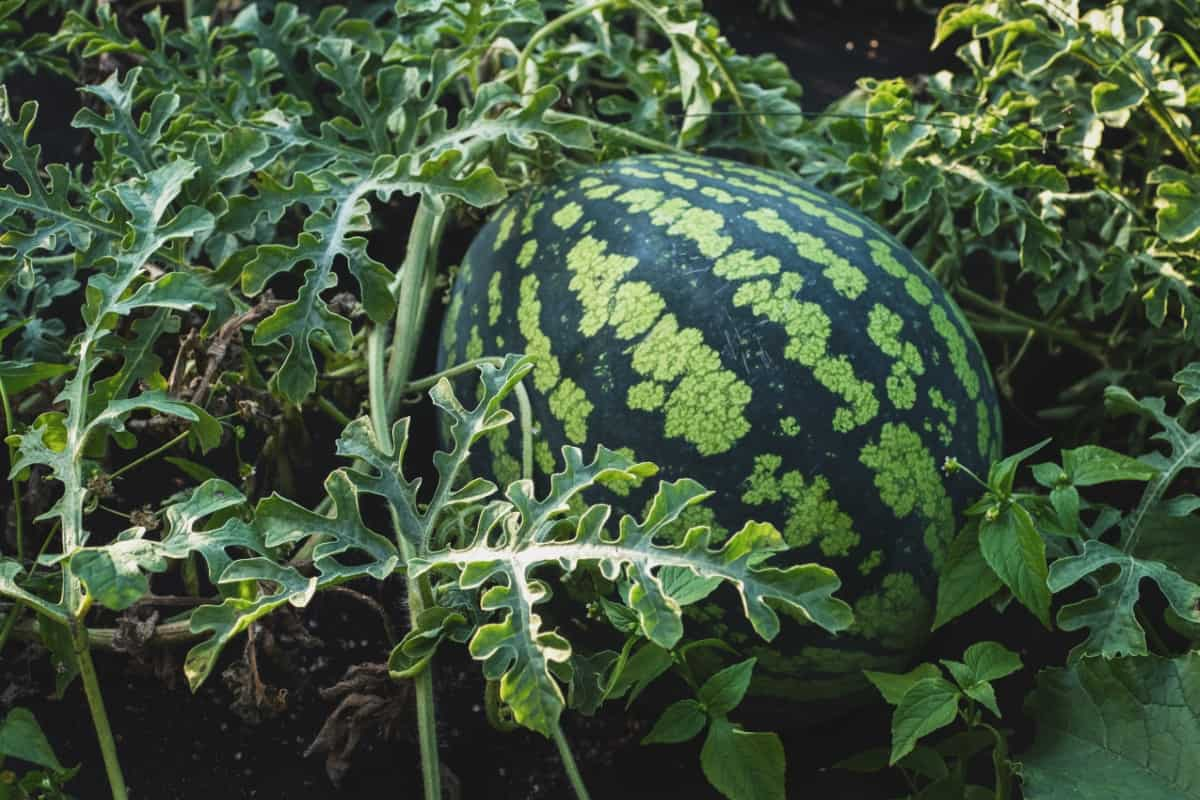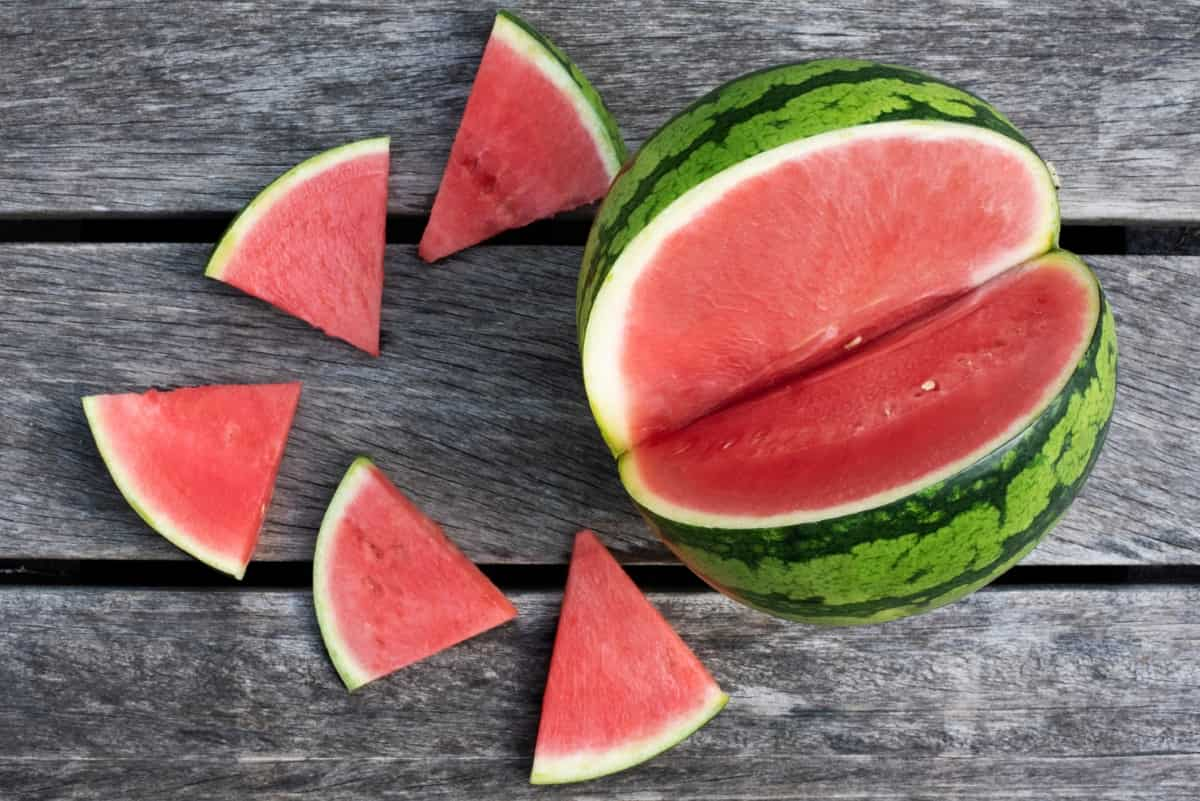Seedless Watermelon seeds are created by carefully crossing the diploid and tetraploid lines of Watermelon plants. These unique seeds give rise to triploid plants that cannot produce viable seeds. This fascinating breeding technique ensures you can enjoy an abundance of sweet and juicy melon without having to deal with pesky seeds.

Steps to Growing Seedless Watermelons from Seed
Selecting the Right Seedless Watermelon Variety for Your Garden
Choosing the right Seedless Watermelon variety depends on your personal preferences and the growing conditions in your garden. The popular Seedless Watermelon variety is Queen of Hearts. Known for its sweet flavor and bright red flesh, this variety thrives in warm climates with plenty of sunlight.
Another variety is King of Hearts, which boasts a crisp texture and high sugar content. It adapts well to various growing conditions and has good disease resistance. Crimson, Trio, Jack of Hearts, Millionaire, and Nova are other popular Seedless Watermelon varieties known for their juicy flavor.
Preparing the Soil for Seedless Watermelon Planting
Select a location for growing Seedless Watermelon that receives full sun exposure throughout the day. Seedless Watermelons thrive in warm temperatures and need sunlight to grow sweet and juicy fruits. Next, start by clearing any weeds or debris from the planting area. Perform a pH test on your soil using a testing kit available at most gardening stores. Aim for a slightly acidic level between 6 and 6.8 –ideal for growing healthy Watermelon plants.
Sowing Seedless Watermelon Seeds: Step-By-Step Instructions
- Start by selecting high-quality Seedless Watermelon seeds. Look for reputable suppliers who specialize in producing reliable and disease-resistant varieties.
- Prepare your soil by ensuring it is well-drained and rich in organic matter. Watermelons thrive in loamy soil that retains moisture but doesn’t become waterlogged.
- Before sowing the Seedless Watermelon seeds, ensure all frost risk has passed, and the soil temperature is consistently above 21°C. This will provide optimal conditions for germination.
- Create small mounds or hills about 3 feet apart in your garden bed or container garden. Each mound should have space for multiple plants as they tend to spread out while growing.
- Place two or three seeds about an inch deep into each mound, spacing them evenly within the mound.
- Cover the Watermelon seeds with soil. Keep the soil moist during seed germination, which usually takes 7-10 days, depending on environmental conditions.
- Once the seedlings emerge, thin them out so there’s only one strong plant per mound to promote healthy growth and reduce resource competition.
- Fertilize Watermelons regularly throughout the growing season using a balanced fertilizer. Please monitor moisture levels and weed regularly around your plants as they grow.
In case you missed it: Fertilizing Potted Watermelon Vines: Organic, Natural, Homemade, NPK, and Schedule

Providing Optimal Growing Conditions for Seedless Watermelons
Seedless Watermelons need plenty of sunlight. This will ensure the plants receive the necessary energy to grow and develop sweet, flavorful fruit. Next, pay attention to the soil quality. Seedless Watermelons prefer well-draining soil. Watermelon plants are heavy feeders, so regular watering is essential. Consider using trellises or stakes for vertical training to support vine growth and protect developing fruit from pests or disease.
Watering and Fertilizing Seedless Watermelon Plants
Overwatering the Watermelon plants can lead to root rot, while underwatering can cause stress and stunted growth. It’s essential to strike a balance by providing regular but moderate amounts of water. The effective technique is drip irrigation or soaker hoses placed at the base of the plants. In terms of fertilizing, Seedless Watermelons benefit from a balanced fertilizer with NPK. Applying a slow-release granular fertilizer at planting time can provide essential nutrients throughout the growing season.
Managing Pests and Diseases in Seedless Watermelon Cultivation
Watermelon plants are susceptible to several pests and diseases that can reduce yield. Aphids are insects that feed on the plant sap, causing stunted growth and deformed leaves. You can introduce beneficial insects to control aphids or use organic sprays made from neem oil. Another pest in Seedless Watermelons is the cucumber beetle. These beetles eat the leaves and spread bacteria that cause bacterial wilt disease.
To combat cucumber beetles, you can use row covers to protect young plants or apply insecticides labeled for cucurbits. Fungal diseases like powdery mildew can also threaten Seedless Watermelon crops. This white powdery substance on leaves inhibits photosynthesis and weakens the plant over time. Preventive measures such as proper spacing between plants, good air circulation, and regular applications of fungicides can help manage this issue.
Supporting and Training Seedless Watermelon Vines
It is an important step in ensuring a successful and abundant harvest. These vigorous vines can quickly spread out, taking up valuable space in your garden. You can help the vines grow vertically by providing proper support and guidance, saving space, and reducing the damage risk to the fruits. The popular method for supporting Seedless Watermelon vines is using trellises or fences.
These structures allow the vines to climb upwards, keeping them off the ground where they are susceptible to rotting or being eaten by pests. Ensure that your trellis or fence is sturdy enough to hold the weight of mature Watermelons. Pruning also plays a crucial role in supporting and training Seedless Watermelon vines. Remove any suckers that develop at leaf nodes along the main stem; these suckers compete with energy resources that should be directed toward fruit production.
Harvesting and Storing Seedless Watermelons: Best Practices
Firstly, check the bottom of the melon – if it’s cream-colored or bright yellow, your Watermelon is ripe and ready to be harvested. A white or pale green spot indicates the fruit is not yet mature. To ensure you handle your precious harvest carefully, use a sharp knife or shears to cut the stem above the fruit. Avoid pulling or twisting, as this could damage the vine and the melon.
In case you missed it: Watermelon Growing Stages and Watermelon Growth Time Lapse

Once harvested, store your Seedless Watermelons properly to maintain their freshness. It’s best to keep them in a cool and dry place. Remember not to refrigerate whole melons unless they have been cut open. If you want longer storage options, consider freezing slices of Seedless Watermelon.
Troubleshooting Common Issues in Growing Seedless Watermelons
Poor Germination: If your Seedless Watermelon seeds fail to germinate, it could be due to improper soil temperature or moisture levels. Ensure the soil is moist, and maintain a temperature.
Lack of Fruit Set: Seedless Watermelons require cross-pollination from a diploid variety for fruit development. If you notice a lack of fruit set, it may indicate insufficient pollination. Consider planting diploid varieties nearby to enhance pollination.
Disease Outbreaks: Common diseases affecting Seedless Watermelons include powdery mildew and fusarium wilt. To prevent disease outbreaks, practice crop rotation, provide adequate air circulation around plants, and avoid overwatering.
Frequently Asked Questions on Growing Seedless Watermelons
Can I Grow Seedless Watermelons from Regular Watermelon Seeds?
Yes, Seedless Watermelons are grown by crossbreeding two different Watermelon varieties to produce a sterile and, therefore, Seedless fruit.
How Long Does It Take for a Seedless Watermelon to Mature?
A Seedless Watermelon takes 80 to 100 days to reach maturity. However, the exact time may vary depending on your growing variety and specific conditions.
Can I Grow Seedless Watermelons from Regular Watermelon Seeds?
No, you cannot grow Seedless Watermelons from regular Watermelon seeds alone. As mentioned earlier, seed lessness is achieved through specific breeding techniques involving crossing different types of plants with varying ploidy levels. To cultivate true Seedless melons, obtain specific hybrid seeds labeled “Seedless” or “triploid.”
When Should I Start Planting My Seedless Watermelon Seeds?
The ideal time for planting your Seedless Watermelon seeds will depend on your local climate conditions and the recommended growing season for these fruits in your area. Generally, it’s best to wait until after any risk of frost has passed before seed sowing directly into well-prepared soil or starting them indoors several weeks ahead if you live in a region with shorter summers.
In case you missed it: 9 Causes of Dying Watermelon Plants and How to Fix Them

Conclusion
Seedless Watermelons are popular due to their crisp texture and sweet flavor. Growing Seedless Watermelons allows you to maximize your garden space, as these plants tend to have smaller vines than seeded varieties. This makes them suitable for small gardens or even container gardening. The advantage of growing Seedless Watermelons is their high productivity. These plants produce more fruit per plant than traditional seeded varieties.
- Feed Your Flock for Less: Top 10 Tips to Save on Chicken Feed
- Ultimate Guide to Ossabaw Island Hog: Breeding, Raising, Diet, and Care
- Hatching Answers: The Top 10 Reasons Your Chickens Aren’t Laying Eggs
- Eggs and Economics: Breaking Down the Cost of Raising Backyard Chickens
- Defend Your Greens: Proven Methods to Keep Iguanas Out of Your Garden
- Ultimate Guide to Cinnamon Queen Chicken: A Comprehensive Guide for Beginners
- Ultimate Guide to California Tan Chicken: Breeding, Raising, Diet, Egg-Production and Care
- Ultimate Guide to Marsh Daisy Chicken: Breeding, Raising, Diet, and Care
- 10 Types of Chicken Farming Businesses You Can Start for Profits